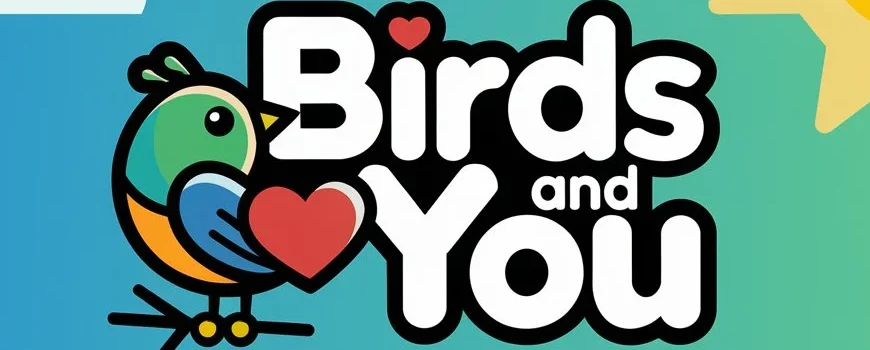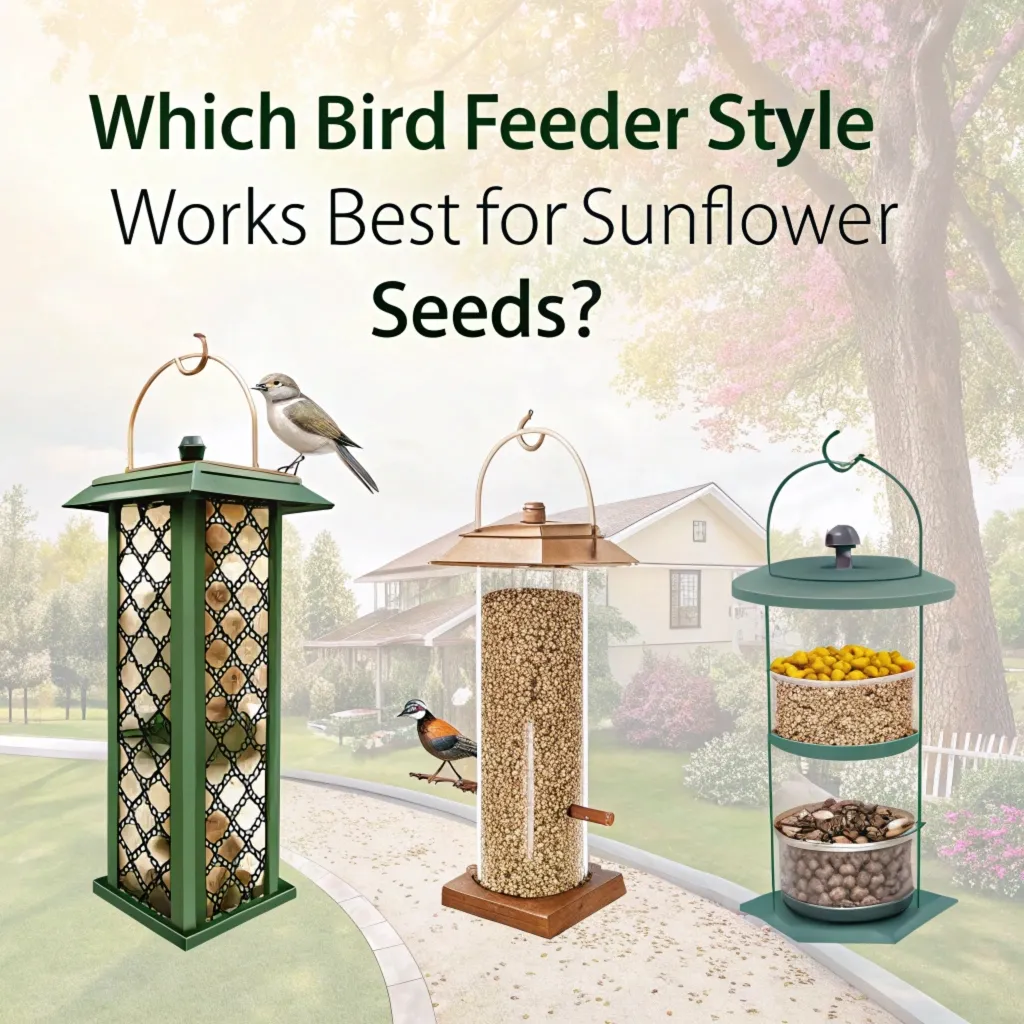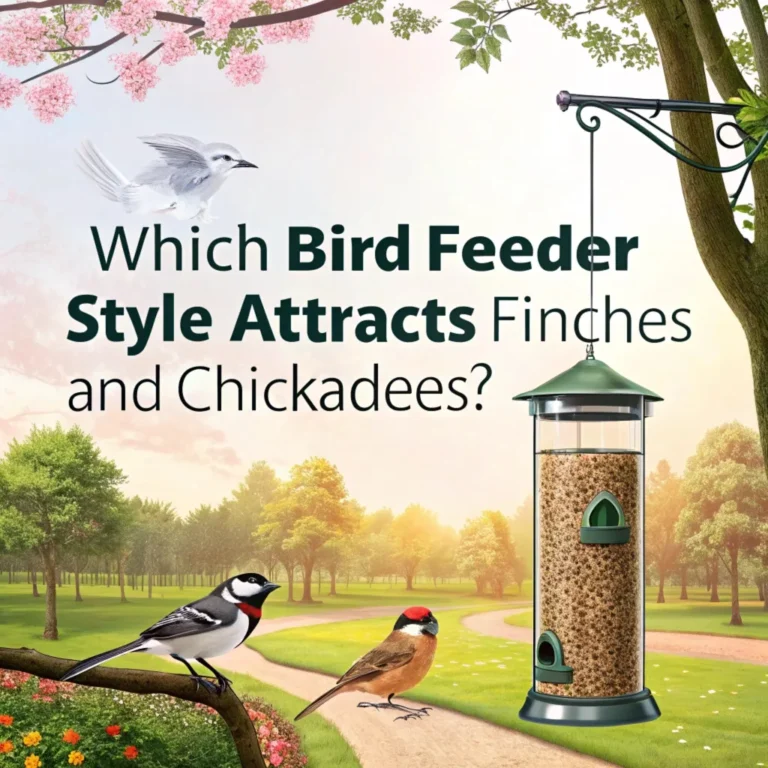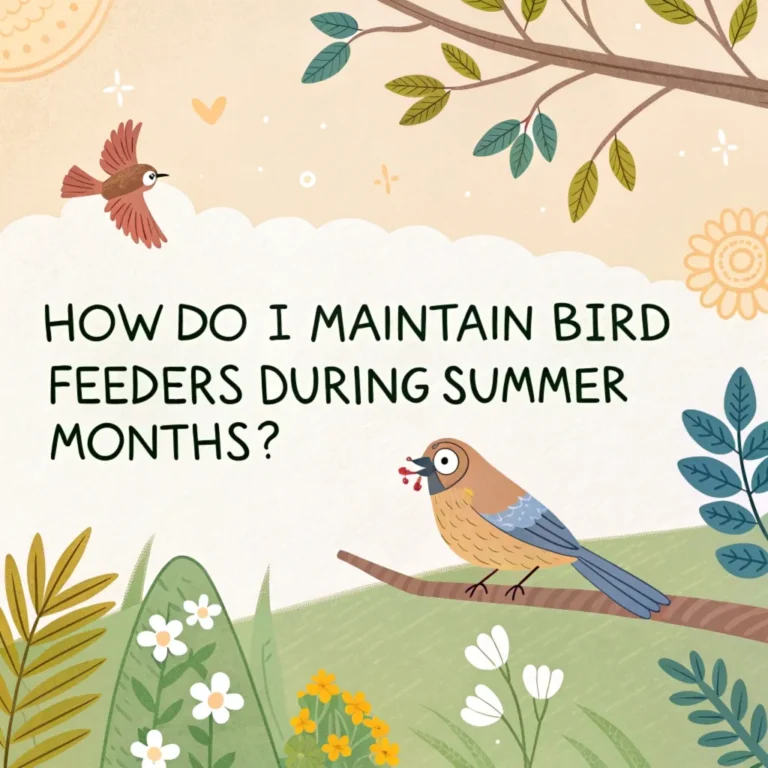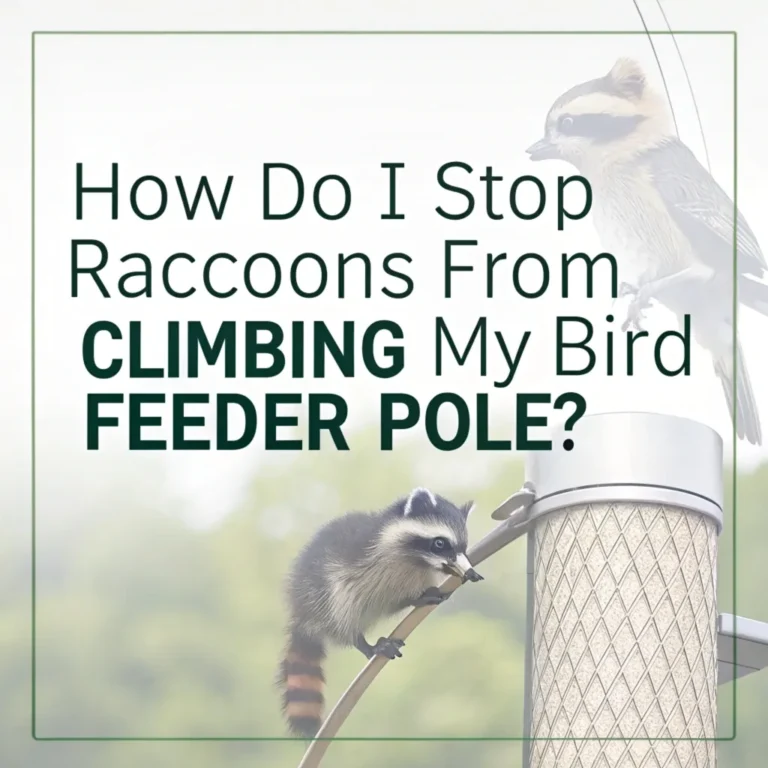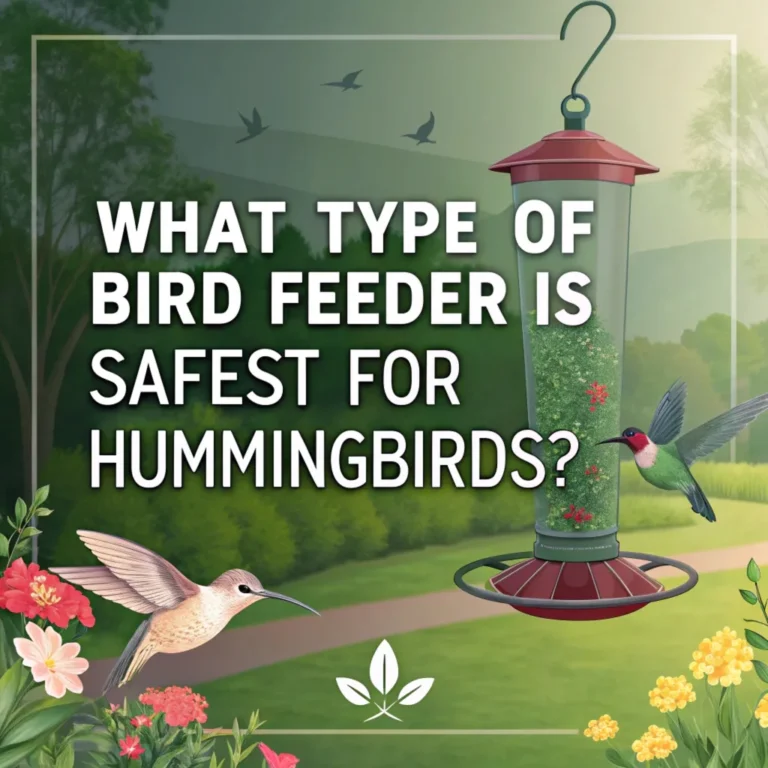Which Bird Feeder Style Works Best for Sunflower Seeds?
Choosing the right bird feeder for sunflower seeds can transform your backyard into a lively bird sanctuary.
This guide helps you select the best feeder to attract a variety of birds. We explore different feeder styles, their benefits, and key factors to consider.
Learn how to provide a safe, accessible food source for your feathered visitors. Discover which feeders work best for sunflower seeds and how to maintain them properly.

Key Takeaways
- Tube feeders work well for small birds and black oil sunflower seeds
- Hopper feeders accommodate various bird sizes and protect seeds from weather
- Tray feeders attract a wide range of species but offer less protection from elements
- Platform feeders provide ample space for multiple birds to feed simultaneously
- Nyjer feeders cater specifically to finches and other small seed-eaters
- Consider factors like bird species, seed type, and feeder durability when choosing
- Proper maintenance is crucial for any feeder type to ensure bird health and safety
Understanding Sunflower Seeds for Birds
Sunflower seeds rank as a top choice for bird feeding. These seeds offer high energy content and essential nutrients for birds. Two main types exist:
- Black oil sunflower seeds: Smaller with thin shells, ideal for most birds
- Striped sunflower seeds: Larger with thicker shells, suitable for bigger birds
Birds gain vital fat, protein, and fiber from sunflower seeds. This nutrition supports them through demanding seasons like winter and breeding periods.
Sunflower seeds provide more than just sustenance for birds. They also promote healthy feather growth and support strong immune systems. The high oil content in these seeds helps birds maintain their body temperature during cold weather, making them an essential food source year-round.
Offering sunflower seeds in your backyard can attract a diverse array of bird species, from colorful cardinals to energetic chickadees.
Tube Feeders: Ideal for Small Birds
Tube feeders excel at dispensing sunflower seeds, especially for smaller birds. These feeders feature:
- Multiple feeding ports
- Slender design to deter larger birds and squirrels
- Adjustable ports to control seed flow
- Protection from rain and wind
Chickadees, finches, and other small birds find tube feeders particularly appealing. The design allows them to perch and feed comfortably.
Tube feeders offer several advantages for bird enthusiasts. Their vertical design allows for efficient use of space, making them ideal for small yards or balconies. The clear plastic tubes also make it easy to monitor seed levels, ensuring you never run out of food for your feathered visitors.
Cleaning tube feeders is relatively simple, which is crucial for maintaining bird health. Regular cleaning prevents the spread of diseases among birds.
Hopper Feeders: Versatile Option for Various Birds

Hopper feeders offer versatility for feeding sunflower seeds. Key features include:
- Large seed capacity
- Enclosed compartments to protect seeds
- Perches for different bird sizes
- Roof to shield from weather
These feeders attract a mix of small and large birds. Cardinals, jays, and grosbeaks often visit hopper feeders. The design keeps seeds dry and accessible.
Hopper feeders are known for their durability and ability to withstand various weather conditions. Their sturdy construction often includes materials like cedar or recycled plastic, which can last for years with proper care. This makes them a cost-effective choice for long-term bird feeding.
Some hopper feeders come with adjustable perch lengths, allowing you to customize the feeder for different bird sizes and species.
Tray or Platform Feeders: Attracting a Variety of Species
Tray feeders provide an open feeding area suitable for many birds. Characteristics include:
- Wide, flat surface for feeding
- Natural foraging-like experience
- Ample space for multiple birds
- Suitable for ground-feeding species
While tray feeders attract diverse birds, they offer less protection from weather and pests. Sparrows, doves, and juncos often prefer this feeder style.
Tray feeders mimic natural ground feeding conditions, making them particularly attractive to birds that typically forage on the forest floor. This design allows birds to feed in a more natural posture, which can be especially beneficial for larger species that may struggle with other feeder types.
One challenge with tray feeders is keeping the seeds dry during wet weather. Some designs include drainage holes to help address this issue.
Platform Feeders: Spacious Feeding Areas

Platform feeders share similarities with tray feeders but often feature raised edges. Benefits include:
- Large feeding area for multiple birds
- Attractive to a wide range of species
- Easy to clean and maintain
- Can be mounted or suspended
These feeders work well for cardinals, jays, and other larger birds. However, they require more frequent cleaning to prevent seed spoilage.
Platform feeders offer excellent visibility for birdwatchers, allowing for clear observation of feeding behaviors and interactions between different species.
This makes them a favorite among bird photography enthusiasts who can capture stunning images of birds in natural feeding positions.
Some platform feeders come with removable mesh bottoms, which improve drainage and air circulation, helping to keep seeds fresher for longer periods.
Nyjer Feeders: Specialized for Finches
While not typically used for sunflower seeds, Nyjer feeders cater to specific small birds. Features include:
- Tiny feeding ports
- Mesh or tube designs
- Ideal for thistle or Nyjer seeds
Goldfinches, siskins, and other small finches favor these feeders. They can be used alongside sunflower seed feeders to attract a variety of birds.
Nyjer feeders are designed to dispense tiny Nyjer seeds, which are rich in oil and highly attractive to finches. The small ports on these feeders prevent larger birds from accessing the seeds, ensuring that the intended species can feed without competition.
Adding a Nyjer feeder to your yard can create a colorful spectacle, especially during the breeding season when male goldfinches display their bright yellow plumage.
Factors to Consider When Choosing a Sunflower Seed Feeder
Several factors influence the best feeder choice:
- Bird species in your area
- Seed type (black oil vs. striped sunflower)
- Feeder durability and weather resistance
- Ease of cleaning and maintenance
- Squirrel resistance features
- Capacity and refill frequency
Consider these factors to select a feeder that meets your specific needs and attracts desired bird species.
Climate considerations play a crucial role in feeder selection. In areas with heavy rainfall or snow, feeders with good drainage and weather protection are essential.
For regions with high winds, choosing a sturdy, well-anchored feeder design can prevent spills and damage.
Your available space also impacts feeder choice. Small balconies might benefit from compact tube feeders, while large yards can accommodate multiple feeder types to create a diverse feeding station.
Maintaining Your Sunflower Seed Feeder
Proper maintenance ensures a healthy feeding environment:
- Clean feeders regularly to prevent disease spread
- Remove wet or moldy seeds promptly
- Refill with fresh seeds as needed
- Check for damage or wear periodically
- Position feeders in safe locations away from predators
Consistent maintenance promotes bird health and enhances your bird-watching experience.
Regular cleaning of bird feeders is crucial for preventing the spread of diseases among bird populations. A solution of one part bleach to nine parts water is effective for disinfecting feeders. After cleaning, ensure the feeder is thoroughly rinsed and completely dry before refilling.
Monitoring seed quality is equally important. Damp or moldy seeds can cause respiratory issues in birds, so it’s essential to replace seeds that have been exposed to moisture promptly.
Combining Feeder Types for Optimal Results
Using multiple feeder types can attract a diverse bird population:
- Pair tube feeders with platform feeders
- Offer both hopper and tray feeders
- Include specialized feeders like Nyjer tubes
This approach caters to various bird preferences and feeding habits.
Creating a diverse feeding station not only attracts more bird species but also reduces competition at individual feeders. This can lead to longer feeding sessions and more opportunities for observation. Consider placing feeders at different heights to accommodate birds with varying comfort levels.
Rotating feeder types seasonally can also be beneficial. For example, platform feeders might be more suitable in dry summer months, while covered hopper feeders offer better protection during wet winter weather.
Conclusion: Choosing the Right Feeder for Your Yard
Selecting the best feeder for sunflower seeds depends on your specific situation. Consider the bird species you wish to attract, your yard layout, and maintenance preferences. Experiment with different feeder types to discover what works best in your backyard bird sanctuary.
Creating an inviting bird feeding area is an ongoing process of observation and adjustment. Pay attention to which feeders and seed types are most popular among your local birds and adapt your setup accordingly.
Remember that providing a water source, like a birdbath, can make your yard even more attractive to a variety of bird species.
By offering a mix of feeder types and maintaining them properly, you can create a thriving bird habitat that provides year-round enjoyment and supports local bird populations.
FAQs
What is the best overall feeder for sunflower seeds?
Tube feeders and hopper feeders generally work best for sunflower seeds, attracting a wide variety of birds while protecting the seeds from weather.
Can I use the same feeder for black oil and striped sunflower seeds?
Yes, most feeders accommodate both types. However, smaller birds may struggle with striped sunflower seeds in certain feeder designs.
How often should I clean my sunflower seed feeder?
Clean your feeder at least every two weeks, more frequently in wet weather or if you notice any signs of mold or disease.
Will sunflower seeds attract unwanted pests like squirrels?
Sunflower seeds can attract squirrels. Consider using squirrel-proof feeders or baffles to deter them.
Can I mix sunflower seeds with other types of bird seed?
While possible, it’s often better to offer sunflower seeds separately to prevent waste, as some birds may scatter less-preferred seeds.
Citations:
[1] https://www.theblogsmith.com/blog/updating-old-blog-posts-for-seo/
[2] https://instapage.com/blog/how-to-improve-readability/
[3] https://www.digitopia.agency/blog/blog-formatting-bullet-points-spacing-bold-text-etc
[4] https://saradoesseo.com/website-tips/format-blog-post/
[5] https://storychief.io/blog/optimize-blog-posts-seo-visibility
[6] https://blog.hubspot.com/website/how-to-bold-in-html
[7] https://victorious.com/blog/blog-formatting/
[8] https://laurentaylar.com/blog/blog-post-writing-hack
[9] https://bloggingx.com/bold-italics-and-underlines-in-blog-posts/
[10] https://wordpress.com/go/content-blogging/how-to-structure-your-blog-posts-for-maximum-readability/
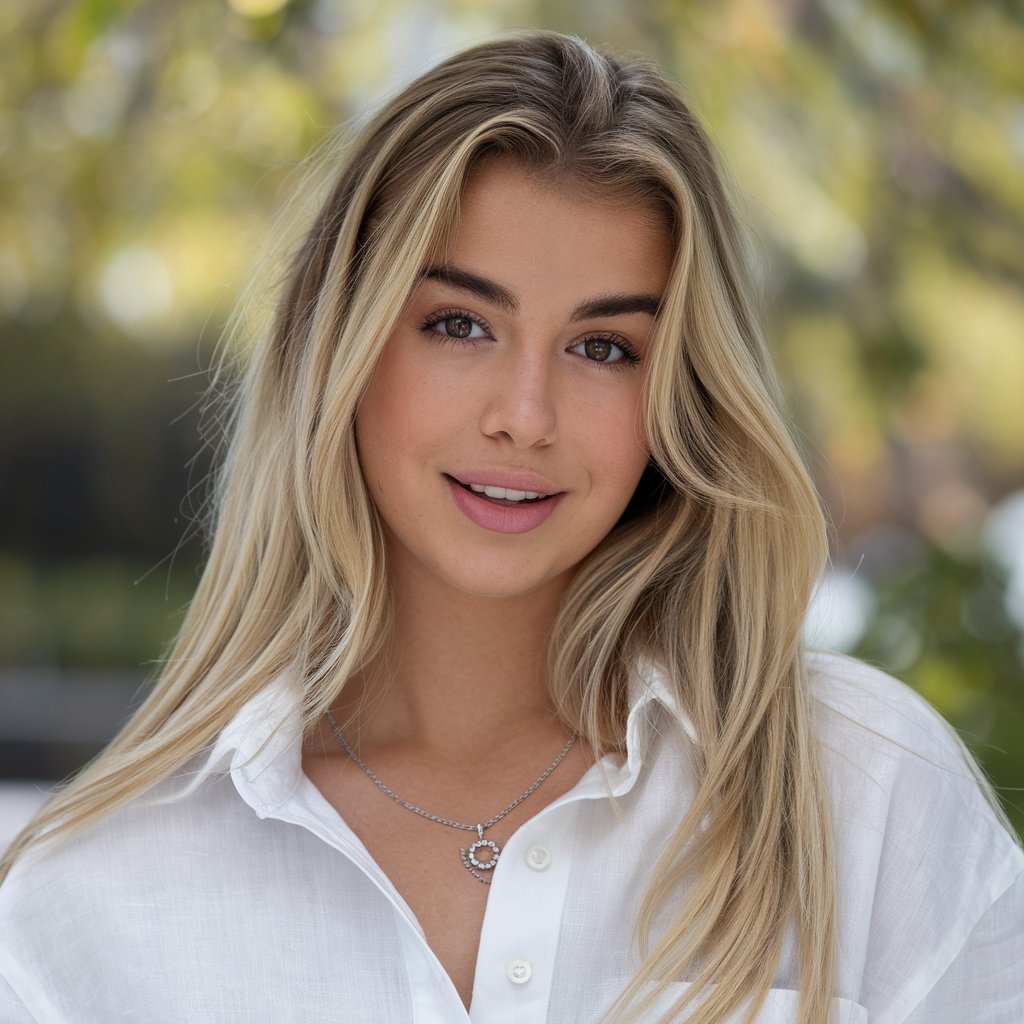
Luna is the passionate founder and author of Birds and You, a website dedicated to sharing her love for birds with fellow enthusiasts. Through her engaging articles and guides, she aims to educate and inspire others to explore the fascinating world of birds. When she’s not writing, you can find Luna observing birds in their natural habitats or sharing beautiful bird photography on Pinterest. Join her on this journey to celebrate and protect our feathered friends!
